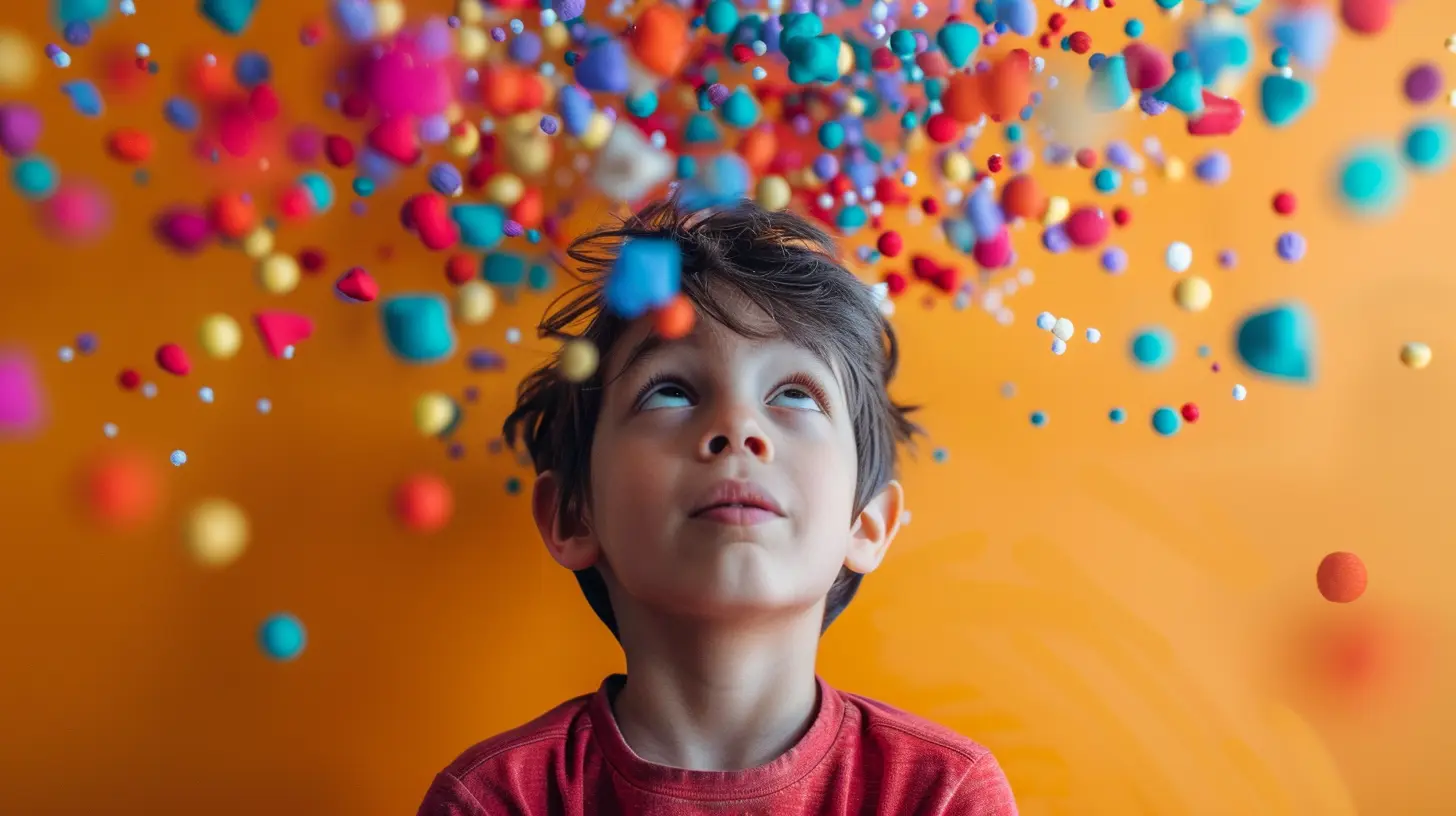The Impact of Learning Styles on Language Acquisition
10 November 2025
Ever felt like your friend just picks up new languages way faster than you do? Or maybe you’ve tried every app and practice method out there, but that Spanish verb still won't stick? Here’s the thing—it's not about being smart or not. It might just be about how you learn.
Welcome to the fascinating world of learning styles and how they shape our language learning journey. Whether you're a student, a teacher, or someone just curious about how we soak up new languages, understanding learning styles can be a total game-changer.
Let’s dig into how your unique way of learning can make a huge impact on how you pick up a new language—and how to use that to your advantage.
What Are Learning Styles, Anyway?
Before we get ahead of ourselves, let’s break it down. Learning styles refer to the different ways people prefer to absorb, process, and retain information. Picture this: one person remembers new words by hearing them in a song, while another needs to write them down ten times to get them to stick. That’s learning style in action.There are a few popular models out there, but one of the most well-known is the VARK model. It categorizes learners into four main types:
- Visual: Learns best through seeing (e.g., charts, diagrams, color-coded notes)
- Auditory: Learns through listening (e.g., lectures, podcasts, conversations)
- Reading/Writing: Prefers words—reading them and writing them down
- Kinesthetic: Learns best with hands-on experience (e.g., role-playing, using gestures)
Sure, most of us are a mix of these, but usually, one or two styles stand out. And when it comes to learning a new language? That style can make all the difference.
Why Learning Styles Matter in Language Acquisition
Languages are complicated beasts. They involve speaking, listening, reading, writing, grammar rules, vocabulary, and cultural nuances. Trying to learn it all can feel overwhelming. But when you align your learning method with your learning style, it's like switching from manual to automatic—everything just flows better.So, how exactly does your style influence your ability to pick up a new language?
Let’s break it down by style.
Visual Learners: Seeing Is Believing
If you're a visual learner, chances are flashcards, mind maps, color-coded notes, or even watching foreign-language films with subtitles work wonders for you.Tips for Visual Learners:
- Use color-coded vocabulary lists—one color for nouns, another for verbs, etc.- Watch videos with subtitles to connect spoken and written language.
- Create mind maps for grammar rules or verb conjugations.
- Download apps that use visual cues (like Duolingo or Memrise).
Think of it this way: for you, a new word isn’t just a sound, it’s a picture. So build pictures—literally!
Auditory Learners: Hear It to Learn It
Do you remember things better when you hear them out loud? Maybe podcasts, language songs, or repeating phrases after a tutor help you learn faster. Then you're an auditory learner.Tips for Auditory Learners:
- Listen to language podcasts or audiobooks.- Use language exchange apps like HelloTalk to chat with native speakers.
- Repeat words and phrases out loud—even if it feels weird.
- Record yourself speaking and play it back.
For you, language is music. So tune in, and play it over and over until it sticks.
Reading/Writing Learners: Words Are Your World
You love lists, manuals, and writing stuff down. Reading grammar explanations and jotting down vocabulary lists is your thing. If that’s you—high five—you’re a reading/writing learner.Tips for Reading/Writing Learners:
- Read articles, blogs, or books in the target language.- Keep a journal or diary in that language.
- Make vocabulary notebooks and constantly update them.
- Dive into grammar guides and write summaries.
For you, the pen is mightier than the audio file. So keep writing and reading your way to fluency.
Kinesthetic Learners: Learn by Doing
Sitting still in a classroom? Pure torture. If you pick things up best when you’re actually doing something—moving, interacting, or using your hands—congrats, you're a kinesthetic learner.Tips for Kinesthetic Learners:
- Use gestures to remember vocabulary (Total Physical Response works well).- Practice language in real-life scenarios—go order coffee or ask for directions.
- Engage in role-plays or act out dialogues.
- Learn through games and physical activities (charades, anyone?).
Your learning thrives through action. Think of language like a sport—you learn by playing, not just watching.
Can a Learning Style Really Make You Learn Faster?
Short answer? Yes. When your approach matches your style, learning doesn’t feel like you're pushing a boulder uphill. It becomes more intuitive, more fun, and frankly, more effective.But here's the kicker: most people are blended learners. You may be primarily visual but also respond well to audio. That’s where multi-sensory learning comes in.
Multi-Sensory Learning: The Secret Sauce
Why settle for one learning style when you can use them all? Multi-sensory learning targets various senses at once—like watching a video (visual) with audio (auditory) while taking notes (reading/writing) and practicing gestures (kinesthetic).This approach:
- Helps your brain make more connections
- Reinforces memory through repetition in different forms
- Keeps you engaged and less bored
So even if you lean toward one style, mixing it up boosts your brain’s ability to retain new stuff.
Language Teachers: Why This Matters for You Too
If you're teaching a language, knowing your students’ learning styles can completely change your game.Here’s how you can tailor your lessons:
- Incorporate visual aids like drawings or slides.
- Use songs, conversations, or interactive audio tools.
- Create writing activities or vocabulary booklets.
- Involve role-playing, games, or hands-on tasks.
The more variety you offer, the more students you’ll reach—and the more likely your lessons will stick.
The Myth of the “Best” Learning Style
Now, a quick reality check: there's no one-size-fits-all “best” learning style. Some experts argue learning styles are more of a preference than a fixed trait. And that may be true. But preference matters.Think about your favorite food. You may be able to eat other dishes, but you'll enjoy and remember your favorite one more. Same with learning styles. Preference doesn't limit you—it guides you.
How to Find Your Learning Style
Not sure where you fall? Ask yourself:- Do I remember better when I see, hear, write, or do?
- What helped me learn best in school?
- How do I remember phone numbers or directions?
- Do I doodle, talk to myself, or take notes during meetings?
You can also take a VARK questionnaire online—it’s not set in stone, but it’s a great starting point.
Making Language Learning Work for You
At the end of the day, learning a new language isn’t just about cramming vocabulary or repeating phrases like a parrot. It's about connecting with another way of thinking, feeling, and expressing yourself. And when you do it your way—your style—it feels less like work and more like discovery.So whether you're watching Spanish telenovelas, reading Japanese manga, or practicing French verbs while cooking, own your style. Because when you learn in the way that suits you best, there's no stopping your progress.
Final Thoughts
The impact of learning styles on language acquisition is huge—but it’s not about boxing yourself in. It’s about unlocking your potential. Think of your learning style as your GPS. Sure, there might be different roads, but it's going to guide you on the best path for YOU to reach your destination faster, smarter, and with fewer wrong turns.So go ahead—speak, write, act, listen, draw, and move your way into a new language.
Because when it comes to learning, your style isn’t just important—it’s everything.
all images in this post were generated using AI tools
Category:
Learning StylesAuthor:

Olivia Lewis
Discussion
rate this article
1 comments
Merida Perry
Learning styles in language acquisition are like choosing a pizza topping—everyone has their favorite! Some prefer the 'visual pepperoni,' while others lean towards the 'auditory mushrooms.' Whatever your slice, just remember: the goal is to satisfy that linguistic appetite, no matter how you savor the flavors of learning!
November 10, 2025 at 3:44 AM

Olivia Lewis
Great analogy! Emphasizing individual preferences in language acquisition highlights the importance of personalized approaches for effective learning.


